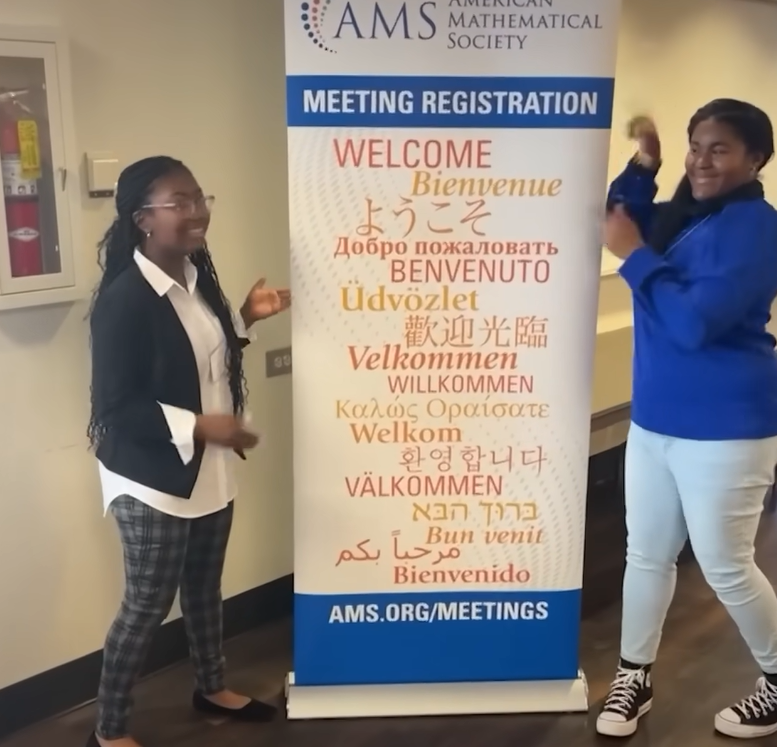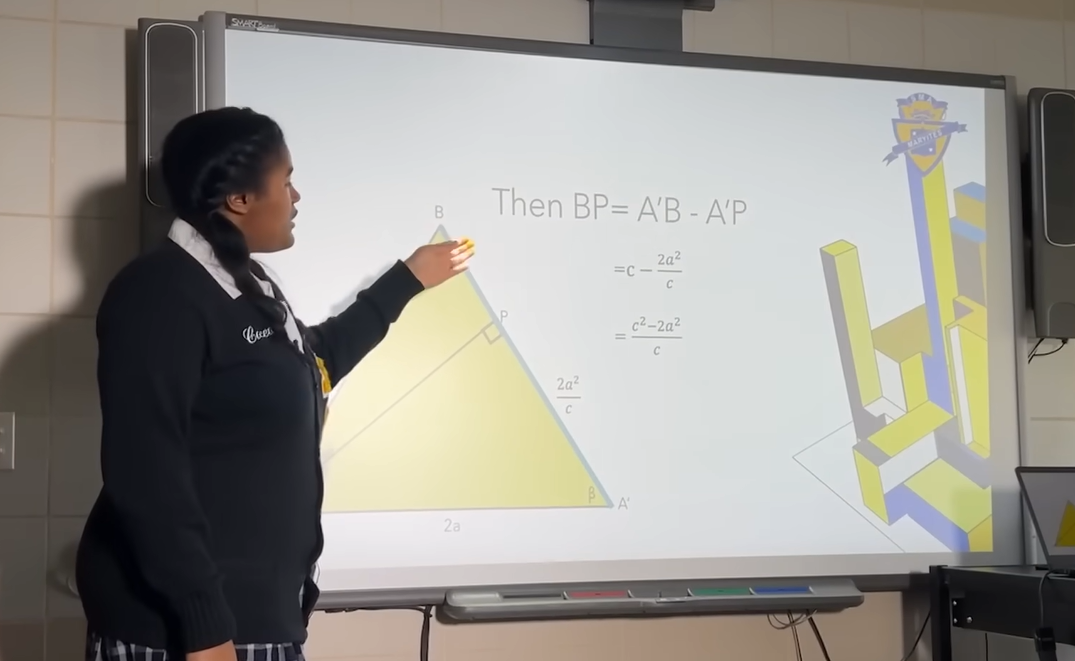Most of us have a vague memory of learning about the Pythagorean theorem many years ago, in a school math class.
If you’re anything like us writer-types, that 2,000-year-old theorem went in one ear, and immediately out the other! But for two students at St. Mary’s Academy in New Orleans, Louisiana, the theorem presented a challenge they simply couldn’t resist taking on.
As a reminder for those of us who aren’t budding mathematicians, the Pythagorean theorem (a2+b2=c2) is the basis of trigonometry, the study of triangles. For over two millennia, math scholars have asserted that it’s impossible to use trigonometry to prove Pythagorean theorem because doing so would be circular logic. In other words, an idea cannot prove itself.
Calcea Johnson and Ne’Kiya Jackson have challenged that concept in their new abstract, asserting that Elisha Loomis’s “The Pythagorean Proposition” dispels the circular logic idea entirely. The two high school seniors recently presented their abstract in front of the American Mathematical Society at their annual southeastern conference. Unsurprisingly, they were the only teenagers there in a sea of math scholars!
Their abstract states: “We present a new proof of Pythagoras’s Theorem which is based on a fundamental result in trigonometry – the Law of Sines – and we show that the proof is independent of the Pythagorean trig identity sin2x+cos2x=1.”
In plain English, that means Calcea and Ne’Kiya proved the theorem using trigonometry after all, and without using circular reasoning.
How did a pair of teenagers solve a riddle that has stumped legions of mathematicians before them? According to Calcea and Ne’Kiya, they have their teachers to thank!
The St. Mary’s school slogan is “No excellence without hard labor,” and they mean it! Both girls say their teachers push them to think outside the box and don’t stifle students’ instincts to discover new concepts.
“We have really great teachers,” Ni’Kiya said with a smile.
Calcea is proud of herself and her friend for doing something no other high school students have ever done.
“It’s really an unparalleled feeling, honestly, because there’s just nothing like being able to do something that people don’t think young people can do,” said Calcea. “A lot of times you see this stuff, you don’t see kids like us doing it.”
Both Calcea and Ni’Kiya will graduate this spring and plan to go into biochemistry and environmental engineering in college. While the American Mathematical Society hasn’t yet confirmed that their theorem is sound, the teens do plan to to present their abstract to a peer-reviewed journal. We’re sure this isn’t the last we’ll hear from these incredibly smart young scholars!
Share this story to encourage these girls to keep pushing forward and testing boundaries.
Want to be happier in just 5 minutes a day? Sign up for Morning Smile and join over 455,000+ people who start each day with good news.






